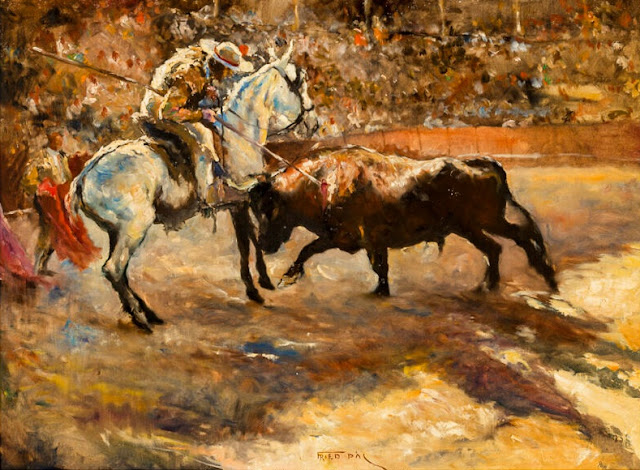Pál Fried (16 June 1893 in Hungary – 6 March 1976 in New York City) was a Hungarian artist. His oil paintings were usually of dancers, nudes, and portraits, and his subjects were almost always women, although he also painted Paris, seascapes, and cowboys and landscapes of the American West. He signed his paintings, as is usual in Hungarian, with his surname first as "Fried Pál". At times, this particular artist would make several, almost identical versions of the same oil painting, except he would use slightly different facial expressions and/or would try different colour schemes.
Fried immigrated to the United States in 1946 after World War II, and became a U.S. citizen in 1953. He lived in Los Angeles and New York City. More on Pál Fried
Please visit my other blogs: Art
Collector, Mythology, Marine
Art, Portrait of a Lady, The
Orientalist, Art of the Nude and The
Canals of Venice, Middle
East Artists, 365
Saints and 365 Days, also visit my Boards on Pinterest
Images are copyright of their respective owners, assignees or others.
Some Images may be subject to copyright
I don't own any of these images - credit is always given when due unless
it is unknown to me. if I post your images without your permission, please tell
me.
I do not sell art, art prints, framed posters or reproductions. Ads are
shown only to compensate the hosting expenses.
If you enjoyed this post, please share with friends and family.
Thank you for visiting my blog and also for liking its posts and pages.
Please note that the content of this post primarily consists of articles
available from Wikipedia or other free sources online.










%20La%20Place%20Clichy%201898%20(59%20x%2077%20cm).jpg)










